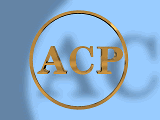by Archbishop Rembert G. Weakland, O.S.B
Many say that the bishops assembled at the Second
Vatican Council would have been wiser had they first articulated
the ecclesial vision of that council and then proceeded to discuss
and outline the liturgical renewal. The liturgical discussion,
they rightly say, would have followed logically after The
Dogmatic Constitution on the Church (Lumen Gentium) and The
Pastoral Constitution on the Church in the Modern World (Gaudium
et Spes). This may well be true, but we all know that hindsight
is easy. Why did the bishops feel so confident to take up the
liturgical questions first?
Historical and Traditional Roots
 Probably the council Fathers began with liturgy because it was the subject that had been the best prepared during the pre-conciliar period. The liturgical reform did not come out of nowhere. For decades that reform had been making its way, first in monastic circles, and then in the Church at large. What became normative at Vatican I I had been long prepared for by such great personages as M. Leroquais, L. Beauduin, F. Cabrol, H. Leclercq, A. G. Martimort, M. Andrieu, B. Botte, B. Capelle in France and Belgium; by J. A. Jungmann, I. Herwegen, O. Casel, B. Neunheuser, A. Baurnstark, K. Mohlberg, Romano Guardini, P. Parsch, B. Fischer in Germany and Austria; by I. Schuster, M. Righetti, and C. Vaggagini in Italy; by Edmund Bishop, Walter Frere and Gregory Dix in England, and by a host of other giants.
Probably the council Fathers began with liturgy because it was the subject that had been the best prepared during the pre-conciliar period. The liturgical reform did not come out of nowhere. For decades that reform had been making its way, first in monastic circles, and then in the Church at large. What became normative at Vatican I I had been long prepared for by such great personages as M. Leroquais, L. Beauduin, F. Cabrol, H. Leclercq, A. G. Martimort, M. Andrieu, B. Botte, B. Capelle in France and Belgium; by J. A. Jungmann, I. Herwegen, O. Casel, B. Neunheuser, A. Baurnstark, K. Mohlberg, Romano Guardini, P. Parsch, B. Fischer in Germany and Austria; by I. Schuster, M. Righetti, and C. Vaggagini in Italy; by Edmund Bishop, Walter Frere and Gregory Dix in England, and by a host of other giants.
Many of these were influenced by such important Benedictine liturgical centers as Maria Laach and Beuron in Germany. In the United States we were initiated into this new thinking by Virgil Michel, R. Hillenbrand, G. Ellard, H. A. Reinhold, M. B. Hellriegel, F. McManus, the indefatigable Godfrey Diekmann and many others.
 This liturgical reform was based on historical and scientific research carried out over many decades. It sought a reform that would be the product of the finest thinking within the whole of the Catholic tradition, basing itself especially on the wisdom, experience, and theology of the patristic period. The bishops assembled at Vatican 11 also knew that the more immediate preparation for their work, one that gave a solid theological basis to it, came from the encyclical of Pope Pius XII, Mediator Dei (1947). The liturgical renewal did not come out of thin air. It was not without historical and traditional roots. All these studies made it clear that the groundwork had been laid and that the bishops could proceed with a certain security to discuss liturgyas their first topic.
This liturgical reform was based on historical and scientific research carried out over many decades. It sought a reform that would be the product of the finest thinking within the whole of the Catholic tradition, basing itself especially on the wisdom, experience, and theology of the patristic period. The bishops assembled at Vatican 11 also knew that the more immediate preparation for their work, one that gave a solid theological basis to it, came from the encyclical of Pope Pius XII, Mediator Dei (1947). The liturgical renewal did not come out of thin air. It was not without historical and traditional roots. All these studies made it clear that the groundwork had been laid and that the bishops could proceed with a certain security to discuss liturgyas their first topic.



